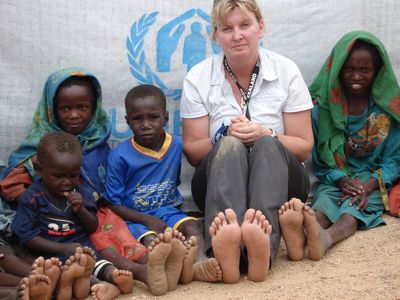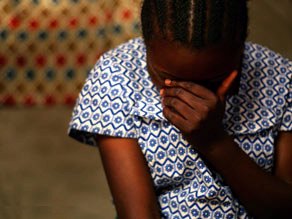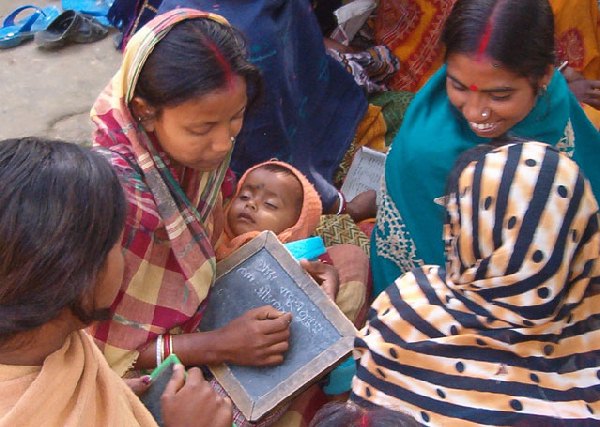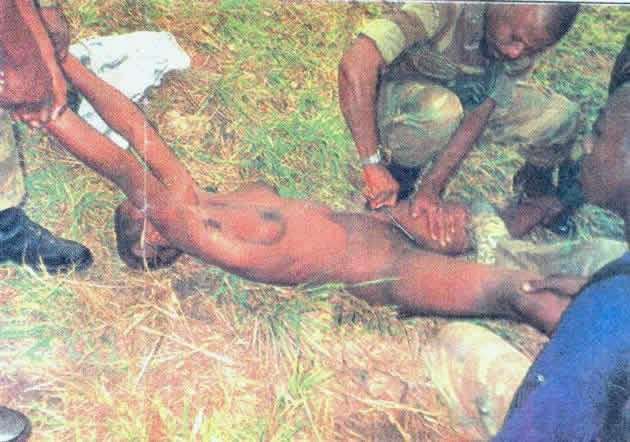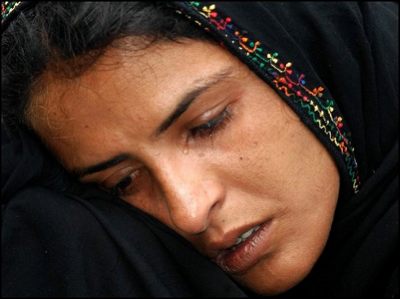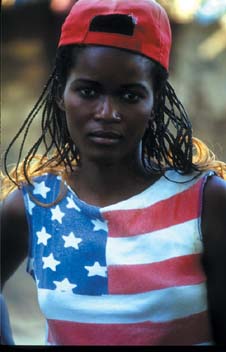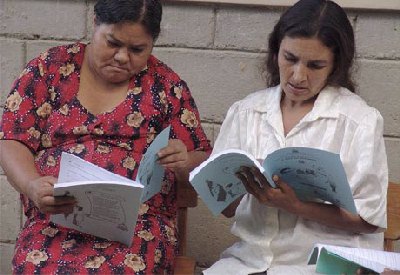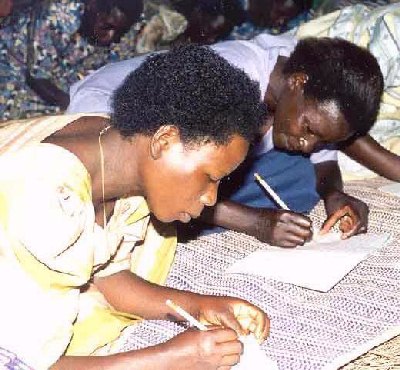 |
||||
|
The Ten Worst Countries for Women
Most Women Still OppressedThe image of the 21st century woman is confident, prosperous, glowing with health and beauty. But for many of the 3.3 billion female occupants of our planet, the perks of the cyber age never arrived. As International Women's Day is celebrated today, they continue to feel the age-old lash of violence, repression, isolation, enforced ignorance and discrimination. "These things are universal," says Taina Bien-Aime, executive director of New York-based Equality Now. "There is not one single country where women can feel absolutely safe." In spite of real progress in women's rights around the globe – better laws, political participation, education and income – the bedrock problems that have dogged women for centuries remain. Even in wealthy countries, there are pockets of private pain where women are unprotected and under attack. Some countries, often the poorest and most conflict-ridden, have a level of violence that makes life unbearable for women. Richer ones may burden them with repressive laws, or sweep the problems of the least advantaged under the carpet. In any country, refugee women are among the most vulnerable. So widespread are the disadvantages that it's hard to pinpoint the worst places in the world for women. Some surveys rate their problems by quality of life, others by health indicators. Human rights groups point to countries where violations are so severe that even murder is routine.
Literacy is one of the best indicators of women's status in their countries. But Amnesty International Canada's women's rights campaigner Cheryl Hotchkiss says building schools alone doesn't solve the problem of equal education. "There's a huge range of barriers women face to getting an education," she says. "It may be free and available, but parents won't send their daughters out to school if they can be kidnapped and raped." Health is another key indicator, including the care of pregnant women, who are sometimes forced into disastrous early marriage and childbearing, as well as infection with HIV/AIDS. But again, statistics fail to show the whole, complex story. "On a rural lake in Zambia, I met a woman who had not told her husband she was HIV-positive," says David Morley, CEO of Save the Children Canada. "She was already living on the edge because she had no children. If she told him, she would be kicked off the island and sent alone to the mainland. She felt she had no choice, because she had no power at all." Putting power in women's hands is the biggest challenge for improving their lives in every country, advocates agree. Whether in the poorest countries of Africa, or the most repressive of the Middle East or Asia, lack of control over their own destinies blights women's lives from early childhood.
The Ten Worst Countries for Women TodayAfghanistan: The average Afghan girl will live to only 45 – one year less than an Afghan male. After three decades of war and religion-based repression, an overwhelming number of women are illiterate. More than half of all brides are under 16, and one woman dies in childbirth every half hour. Domestic violence is so common that 87 per cent of women admit to experiencing it. But more than one million widows are on the streets, often forced into prostitution. Afghanistan is the only country in which the female suicide rate is higher than that of males. Democratic Republic of Congo: In the eastern DRC, a war that claimed more than 3 million lives has ignited again, with women on the front line. Rapes are so brutal and systematic that UN investigators have called them unprecedented. Many victims die; others are infected with HIV and left to look after children alone. Foraging for food and water exposes women to yet more violence. Without money, transport or connections, they have no way of escape.
Iraq: The U.S.-led invasion to "liberate" Iraq from Saddam Hussein has imprisoned women in an inferno of sectarian violence that targets women and girls. The literacy rate, once the highest in the Arab world, is now among the lowest as families fear risking kidnapping and rape by sending girls to school. Women who once went out to work stay home. Meanwhile, more than 1 million women have been displaced from their homes, and millions more are unable to earn enough to eat. Nepal: Early marriage and childbirth exhaust the country's malnourished women, and one in 24 will die in pregnancy or childbirth. Daughters who aren't married off may be sold to traffickers before they reach their teens. Widows face extreme abuse and discrimination if they're labelled bokshi, meaning witches. A low-level civil war between government and Maoist rebels has forced rural women into guerrilla groups. Sudan: While Sudanese women have made strides under reformed laws, the plight of those in Darfur, in western Sudan, has worsened. Abduction, rape or forced displacement have destroyed more than 1 million women's lives since 2003. The janjaweed militias have used systematic rape as a demographic weapon, but access to justice is almost impossible for the female victims of violence. Guatemala: The impoverished female underclass of Guatemala faces domestic violence, rape and the second-highest rate of HIV/AIDS after sub-Saharan Africa. An epidemic of gruesome unsolved murders has left hundreds of women dead, some of their bodies left with hate messages. Mali: One of the world's poorest countries, few women escape the torture of genital mutilation, many are forced into early marriages, and one in 10 dies in pregnancy or childbirth.
Pakistan: In the tribal border areas of Pakistan women are gang-raped as punishment for men's crimes. But honour killing is more widespread, and a renewed wave of religious extremism is targeting female politicians, human rights workers and lawyers. Saudi Arabia: Women in Saudi Arabia are treated as lifelong dependents, under the guardianship of a male relative. Deprived of the right to drive a car or mix with men publicly, they are confined to strictly segregated lives on pain of severe punishment. Somalia: In the Somali capital, Mogadishu, a vicious civil war has put women, who were the traditional mainstay of the family, under attack. In a society that has broken down, women are exposed daily to rape, dangerously poor health care for pregnancy, and attack by armed gangs. "While the potential of women is recognized at the international level," says World Health Organization director-general Margaret Chan, "this potential will not be realized until conditions improve – often dramatically – in countries and communities. Too many complex factors, often rooted in social and cultural norms, continue to hinder the ability of women and girls to achieve their potential and benefit from social advances."
BEST COUNTRIES TO BE A WOMANMeasures of well-being include life expectancy, education, purchasing power and standard of living. Not surprisingly, the top 10 countries are among the world's wealthiest.
1. Iceland
SOURCE: UNDP Gender-related development index
INCOME GAPS
Poverty means pain for both men and women, but throughout the world it's women who suffer the most from lack of income. In these countries, women earn less than 50 per cent of men's incomes:
Benin 48 per cent
SOURCE: UNDP Human Development Report
|
|
|||
|
|
||||
LITERACY GAPS
The better a woman's education, the better chance she and her children have of surviving economically, protecting themselves and leading healthy lives. In these countries, women's literacy rate is less than 50 per cent of men's:
Mali 49 per cent
Countries with women's literacy rate less than 70 per cent of men's:
India 65 per cent
SOURCES: UNDP, UNESCO, UNICEF
|
||||
 |
|
 |
||
